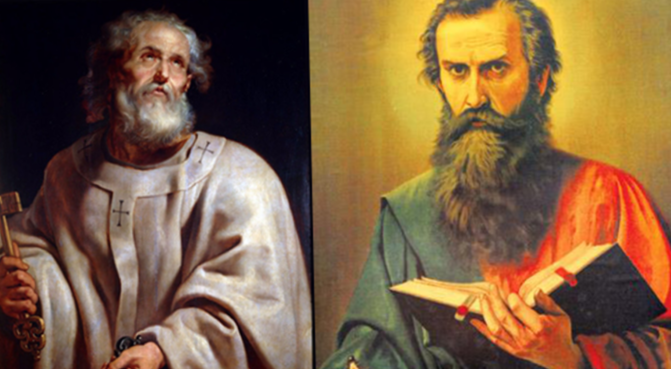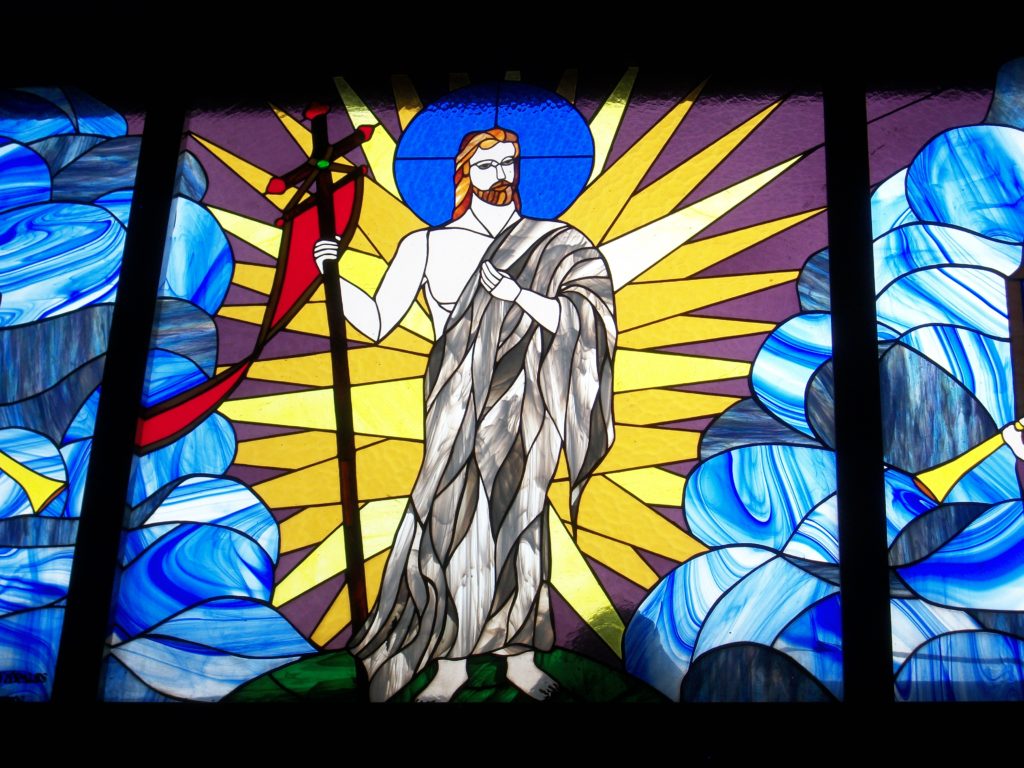Saints Peter and Paul: Meaning and imposition of palliums
Analysis of the solemnity

Mr. Alejandro Vázquez-Dodero shares with Exaudi readers an article on the solemnity of Saint Peter and Saint Paul today, June 29, analyzing the meaning of the festival and the imposition of palliums.
***
Every June 29 we solemnly celebrate Saints Peter and Paul, traditionally called “pillars of the Church”, authentic testimony of the fulfillment of a mission with which they identified and to which they consecrated their lives until martyrdom.
In the words of Pope Francis, “They are our traveling companions in the search for God, they are our guide on the path of faith and holiness; “They push us towards Jesus, to do everything He asks of us.”
Benedict XVI proclaimed them “principal patrons of the Church of Rome,” and stressed that they both concentrate the message of the holy Gospel.
Saint Peter
A native of Bethsaida, he was born at the end of the 1st century BC, and died in the year 67. Also known as Cephas. Fisherman by trade in the Sea of Galilee. He is the most cited disciple of the New Testament in general, and of the four Gospels and the Acts of the Apostles in particular.
Known as the “prince of the apostles,” the Church identifies him as the first Pontiff, based on the words that Christ addressed to him: “You are Peter, and on this rock I will build my Church, and the power of death will not prevail against it. I will give you the keys to the kingdom of heaven. Whatever you bind on earth will be bound in heaven, and whatever you loose on earth will be loosed in heaven” (Matthew 16:18-19). Saint Peter is entrusted with the Petrine function or ministry.
Peter, the fragile and passionate friend of Jesus – he would deny him three times before being crucified – is the man chosen by Christ to be “the rock” of the Church. He humbly accepted his mission until the end of his life. His mortal remains rest in St. Peter’s Basilica in the Vatican, a destination for millions of pilgrims from all over the world.
He is credited with the content of the Gospel of Saint Mark, insofar as he was able to collect what was preached by the prince of the apostles and reflect it in his Gospel. In addition, two epistles are attributed to him. Saint Peter would end his days in Rome, where he was bishop, and there he would die a martyr. He was buried a short distance from his martyrdom, the place of his burial that would be chosen for the construction of the basilica that we can enjoy today in the Eternal City.
Saint Paul
Paul of Tarsus, Jewish name Saul of Tarsus or Saul Paul, known as Saint Paul. He was born in Tarsus, Cilicia, between 5 and 10 AD, and died in Rome between 58 and 67. He is called the “Apostle to the Gentiles,” the “Apostle to the Nations,” or simply “the Apostle.”
He founded several Christian communities and evangelized in the most important urban centers of the Roman Empire, such as Antioch, Corinth, Ephesus and Rome. Paul, who began persecuting Christians, would become, as we said, the apostle of the Gentiles. Model of evangelizer for all Catholics.
He composed some of the earliest canonical Christian writings, including the oldest known, the First Epistle to the Thessalonians. He is the author of the so-called Pauline epistles, addressed to: Romans, the first and the second to the Corinthians, Galatians, Philippians, Thessalonians, and Philemon.
It seems that he died a martyr, beheaded, as extracted from the apocryphal text written in the year 160 known under the title of Acts of Paul.
Imposition of archiepiscopal palliums
The Petrine function or ministry that was entrusted to Saint Peter as Roman pontiff needs collaborators. This is for the effectiveness of the government of the Church, especially in an organization, the ecclesial one, of universal scope.
An essential part of this collaboration is provided by the archbishops – bishops at the head of particularly important dioceses. Among them there are some called “metropolitan archbishops” because they are in charge of the ecclesiastical province in which their archdioceses are located.
Every June 29, as it is the solemnity of the apostles Peter and Paul, the Pope blesses the “palliums” destined for the metropolitan archbishops.
What is an archiepiscopal pallium? It is a white wool ornament in the shape of a circular sash worn on the shoulders, from which two rectangular strips with black or red silk crosses hang in front of the chest and on the back. It symbolizes the power that the archbishops have in their area, and also the bond of communion with the Roman Pontiff.
Until Saint John Paul II, after blessing it, the Pope sent a pallium to each of the metropolitan archbishops named in the immediately preceding year, who were imposed in his archdiocese.
A new period began with the Polish Pope, inviting the new metropolitans to concelebrate with him in St. Peter’s Basilica, and imposing the pallium on them during Mass. This custom also remained during the pontificate of Benedict XVI and the first two years of Pope Francis.
Since 2015, the new metropolitans would be in Rome, they would concelebrate the Eucharist with the Holy Father and participate in the rite of blessing the palliums, but there would be no imposition: they would simply receive the pallium designated for them from the Holy Father in a simpler and more private way, thus wanting to signify their hierarchical communion.
The imposition today is carried out on the respective archdioceses by the apostolic nuncios – representatives of the Holy See in each State –, to strengthen the relationship of the metropolitans with their local church and enable their faithful to participate in the ceremony.
Related

Reflection by Bishop Enrique Díaz: Alleluia, alleluia
Enrique Díaz
20 April, 2025
5 min

Christ is Risen! Alleluia! Commentary by Fr. Jorge Miró
Jorge Miró
20 April, 2025
3 min

Easter: Mystery of Freedom
Carlos J. Gallardo
20 April, 2025
5 min

“Being Catholic in Tanzania is a source of pride”
Fundación CARF
16 April, 2025
6 min
 (EN)
(EN)
 (ES)
(ES)
 (IT)
(IT)

